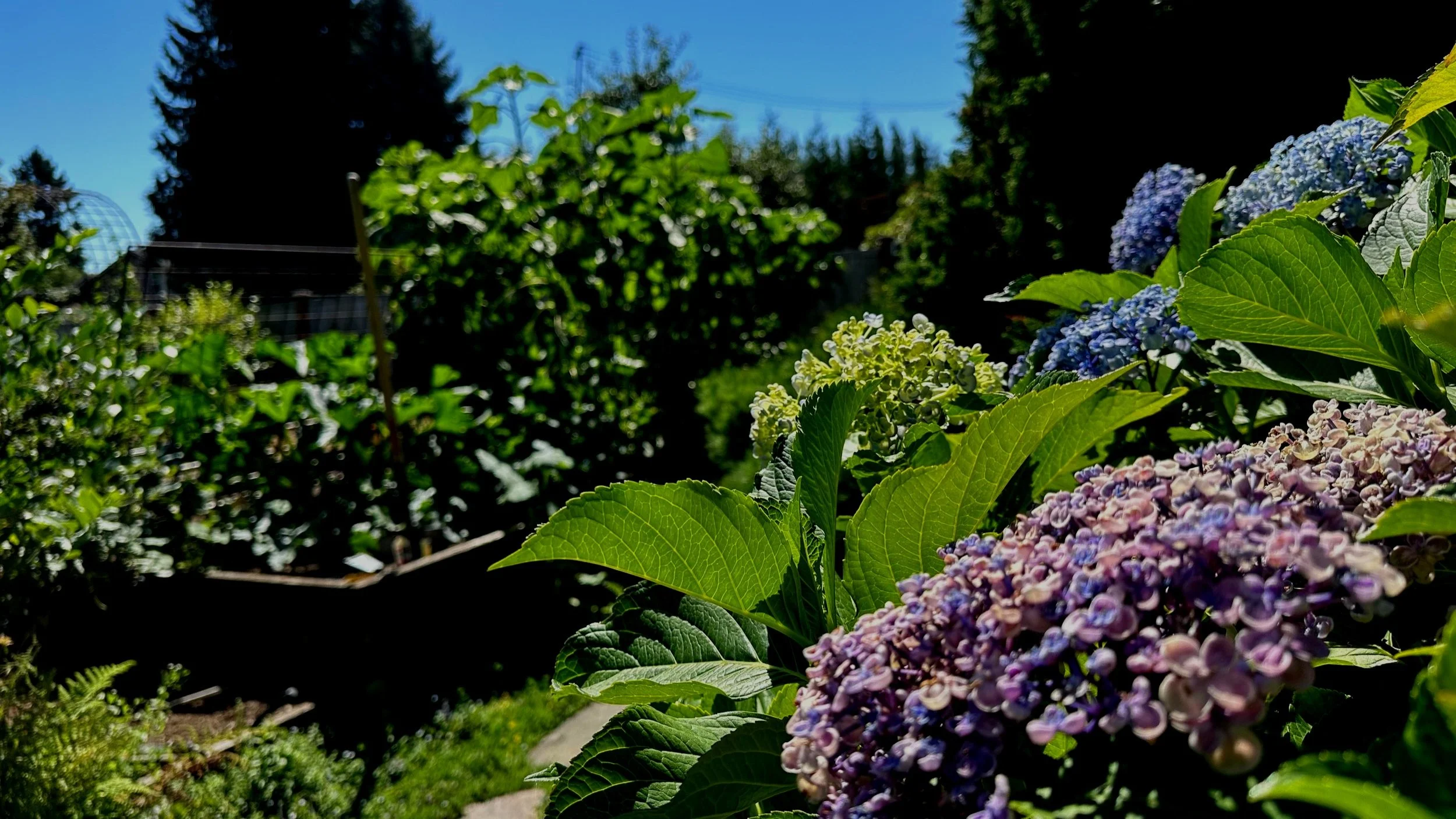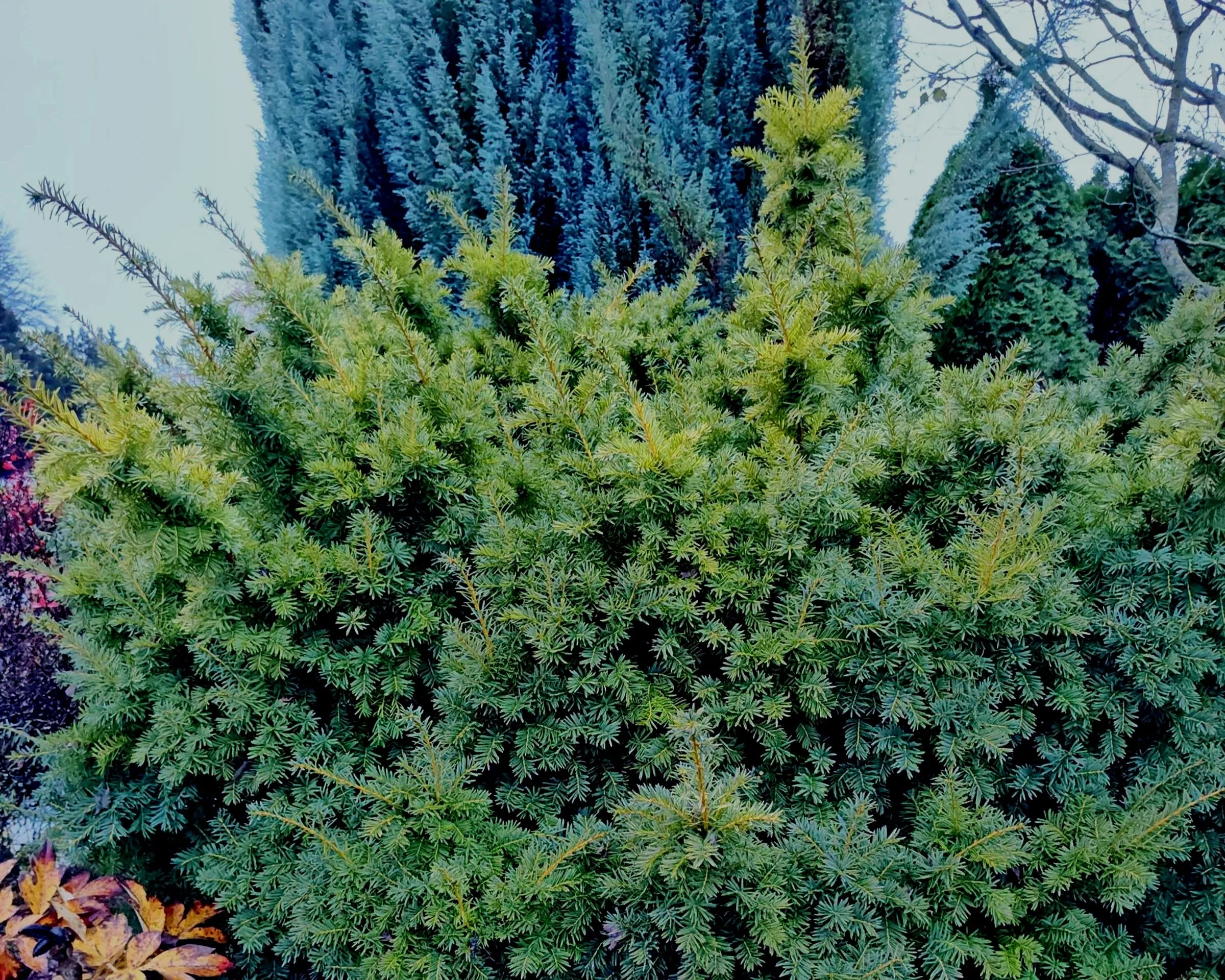As we near the end of August it is becoming apparent in my garden that the fall season is fast approaching, despite the fact that as I write this (the week of August 14th) it is still very much summer with temps in the low 90’s. Yes, it is still hot with lots of sunshine, but there are sure signs that we are about to switch to another season. Here are some of the clues I have noticed…
The days are getting shorter. This one is sometimes hard to recognize because it happens so slowly, but the plants know exactly what is going on and they respond in a very predictable way. Growth slows down, flower production diminishes, and water uptake is reduced. In the height of summer, I had to water my containers every day, and parts of my garden similarly. Now, despite the recent heat, the ground is staying moist much longer and my containers are quite happy with an every-other-day regime. Once or twice a week is also plenty for the mixed perennial beds. Be careful not to over-water the garden this time of year (assuming you gave it a good soaking during the hot spell).
As the nights get cooler and the days get shorter, Mother Nature sends out a signal for fall annual weeds to germinate, especially grasses. The simplest solution is to apply a new layer of mulch. On the good side though, by the end of this month and throughout the month of September, we can take advantage of this pattern and restore our turf areas by either planting new grass or over-seeding established lawns. Seed should come up in 7 to 10 days in the fall and be ready for the first mowing in 30 days or less.
Fall blooming perennials are starting to show color. I have several clumps of Asters that are cracking a tiny bit of color - just a gentle reminder of what is yet to come in the month of September. I like to refer to my Asters as my “asterisks” of the fall season. Likewise, the fall blooming Sedums, such as ‘Autumn Joy' are also slowing modulating from green to pink and the bees check them daily to see if there is any nectar flowing yet. In a few more weeks they will be smothered with pollinators. Fall blooming grasses, like Pennisetum ‘Hamlin’ and its many variations, are putting up spikes just in time for some fall drama. Actually, almost all warm season grasses are entering their blooming stages and the effect in the garden is quite pleasing. Finally, Blue Leadwort, aka Ceratostigma plumbaginoides, (let that one roll off your tongue at your next get together) is sporting gentian-blue flowers and will continue to do so for several weeks, after which the foliage turns a rich bronze-red before going dormant. While it is late to wake up in the spring, it is a fabulous fall standout.
Probably the most obvious clues that the season is changing can be experienced at your local garden center where the product mix is morphing away from the Petunias and other summer annuals into fall blooming Asters, Mums, “flowering” Cabbage and Kale, Ornamental Grasses, warm colored perennials (like the many shades of Heucheras and Sedges), Ornamental Peppers, and so on and so forth.
The gardening season is not by any stretch of the imagination coming to an end. It is simply shifting gears. Late August and September are ideal months to introduce new shrubs, trees, and perennials into our landscapes, and rejuvenate our containers with fall and winter hardy perennials that will carry us through the cold, grey months of winter.
Don’t put those shovels and gloves away just yet. There is a whole new gardening season just around the corner, waiting for us to jump in and get our hands dirty. What are you waiting for?



